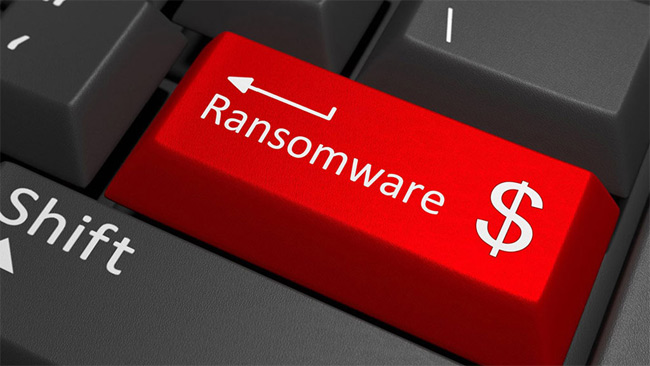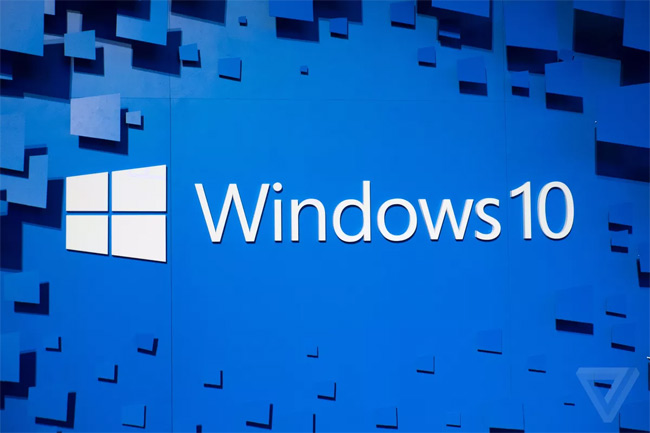This is why you should say goodbye to Windows 7 and upgrade your device to Windows 10
In 2017 users' personal devices were subjected to the attack of many ransomware and malware. The most typical is the WannaCry malware, hundreds of thousands of computers in more than 90 countries that have been poisoned for several hours. While most of the old Windows operating systems were affected, Windows 10 was 'safe and sound'.
Mr. Tanmay Ganacharya, research manager of Windows Defender gave a number of reasons why you should say goodbye to old Windows versions and upgrade your device to Windows 10, along with the next generation security mode.

Windows 10's Ransomware resistance outperforms Windows 7
According to him, many of the businesses and services such as transport, hospitals . were affected by three global ransomware booms. According to statistics, ransomware has adversely affected about three million computers and more than 1 million users were affected by attacks, emails, trojans . After three attacks, there were more than 120 new ransomware types. appear.
According to technology page StatCounter, because Windows 7 has no built-in advanced and modern security solutions, it suffers 3.4 times the number of ransomware attacks than Windows 10. Windows Fender on Windows 10 can resist ransomware and other threats thanks to many features and improvements.
Windows 10 is equipped with multi-layer security to prevent Ransomware

Windows 10 has a multi-layer defense system like Windows Defender Application Control, Credential Guard and Windows Defender System Guard (Secure Boot) to prevent Ransomware.
The most specific proof is the ability to prevent Petya in June 2017. Similar to how WannaCry works, Petya infiltrates users' devices through unknown software, then encrypts important data.
WannaCry, Petya is still capable of infiltrating devices using Windows 7, although this version has a number of built-in measures against malware while Windows 10 devices do not suffer any effects. Come on.
So, use Windows 10 to keep your devices protected.
Windows 10 has built-in real-time protection
Controlled Folder Access - a new feature that allows you to add protected folders built into Windows 10 to prevent ransomware from accessing your files in real time, even when the device is being attacked. Controlled Access folder will let any application try to modify protected files to blacklist and 'freeze' so they cannot work.
- Enable ransomware Controlled Folder Access on Windows 10
At the same time, Windows Defender also plays an important role in helping Windows 10 prevent attacks.
Those who have used both Windows 7 and Windows 10 versions then please comment on what is "better".
See more:
- Microsoft closed the expiration date for free updates to Windows 10 on January 16, 2018
- 7 extremely interesting Wifi features on Windows 10 not everyone knows
- Microsoft has declared Windows 8.1, but is still waiting without upgrading to Windows 10
You should read it
- How does Windows 7, 8 not automatically upgrade to Windows 10?
- Microsoft details the upgrade process from Windows 7/8/10 to Windows 11
- Instructions for upgrading Windows XP to Windows 7 or Windows 10
- How to Upgrade Windows 7 to Windows 8
- 2018 already, using Windows 7 should I upgrade to Windows 10?
- DVD upgrade to Windows 8 costs 70 USD
- 8 reasons why you should upgrade to Windows 11
- When will Windows 11 come out? Should I upgrade to Windows 11?
May be interested
- Germany forced Microsoft not to impose a Windows 10 upgrade
 microsoft makes many users feel quite annoying when arbitrarily putting many things of windows 10 on a user's pc, from downloaded files to unintended installations.
microsoft makes many users feel quite annoying when arbitrarily putting many things of windows 10 on a user's pc, from downloaded files to unintended installations. - Should I upgrade RAM for my phone?
 to improve device performance, many users have the idea of upgrading ram for phones. is it possible to upgrade the ram for the phone and the upgrade is as easy as we think? please read along.
to improve device performance, many users have the idea of upgrading ram for phones. is it possible to upgrade the ram for the phone and the upgrade is as easy as we think? please read along. - How does Windows 7, 8 not automatically upgrade to Windows 10?
 for windows 7 and windows 8 users, if windows 10 is eligible to upgrade windows 10 will receive a notification to upgrade windows 10 in the system tray. however, if you don't want to use windows 10, you can still block windows 7 and 8 upgrades to windows 10.
for windows 7 and windows 8 users, if windows 10 is eligible to upgrade windows 10 will receive a notification to upgrade windows 10 in the system tray. however, if you don't want to use windows 10, you can still block windows 7 and 8 upgrades to windows 10. - 8 reasons why you should upgrade to Windows 11
 just like the versions of windows that have been released in the past, windows 11 comes with a series of interface changes as well as feature-related improvements.
just like the versions of windows that have been released in the past, windows 11 comes with a series of interface changes as well as feature-related improvements. - How to Upgrade Windows 7 to Windows 8
 this wikihow teaches you how to upgrade your windows 7 pc to windows 8 using a dvd or by downloading the microsoft upgrade assistant tool. insert the windows 8 dvd into your windows 7 pc. after a few moments, you should see a blue 'windows...
this wikihow teaches you how to upgrade your windows 7 pc to windows 8 using a dvd or by downloading the microsoft upgrade assistant tool. insert the windows 8 dvd into your windows 7 pc. after a few moments, you should see a blue 'windows... - 2018 already, using Windows 7 should I upgrade to Windows 10?
 2018, if you are using windows 7, should you upgrade to windows 10? for me, it certainly is, but it is for me. today i will show you the reasons why you should upgrade to windows 10.
2018, if you are using windows 7, should you upgrade to windows 10? for me, it certainly is, but it is for me. today i will show you the reasons why you should upgrade to windows 10. - Apps and services users should say goodbye right in 2017
 'if it does not fail without repair'. many longtime windows users have used this reason to justify being afraid to upgrade applications and services. but in today's it environment, the concept of breaking means developing.
'if it does not fail without repair'. many longtime windows users have used this reason to justify being afraid to upgrade applications and services. but in today's it environment, the concept of breaking means developing. - Instructions for upgrading from Windows 10 32-bit to 64-bit
 if your hardware supports 64-bit versions of windows 10, the crime is not to upgrade from 32-bit version to 64-bit and try the new version.
if your hardware supports 64-bit versions of windows 10, the crime is not to upgrade from 32-bit version to 64-bit and try the new version. - When will Windows 11 come out? Should I upgrade to Windows 11?
 windows 11 has officially been introduced to the market but are they worth the upgrade? when will microsoft let users download the official windows 11 installation?
windows 11 has officially been introduced to the market but are they worth the upgrade? when will microsoft let users download the official windows 11 installation? - How to view upgrade history in Windows 10
 viewing the detailed windows upgrade history can be very helpful when learning about windows builds and versions previously installed on a windows 10 pc.
viewing the detailed windows upgrade history can be very helpful when learning about windows builds and versions previously installed on a windows 10 pc.










 FPT terminates the contract of .VN Domain Name Registrar from 21/1/2018
FPT terminates the contract of .VN Domain Name Registrar from 21/1/2018 The vulnerability on macOS 10.13 allows access to the Mac with any password
The vulnerability on macOS 10.13 allows access to the Mac with any password Intel released Microcode for CPU Linux to fix Meltdown and Specter
Intel released Microcode for CPU Linux to fix Meltdown and Specter This is a way to protect Linux Mint from Meltdown and Specter
This is a way to protect Linux Mint from Meltdown and Specter Apple transferred management rights to iCloud in China to local companies
Apple transferred management rights to iCloud in China to local companies Intel patch causes a reboot error on older processors
Intel patch causes a reboot error on older processors